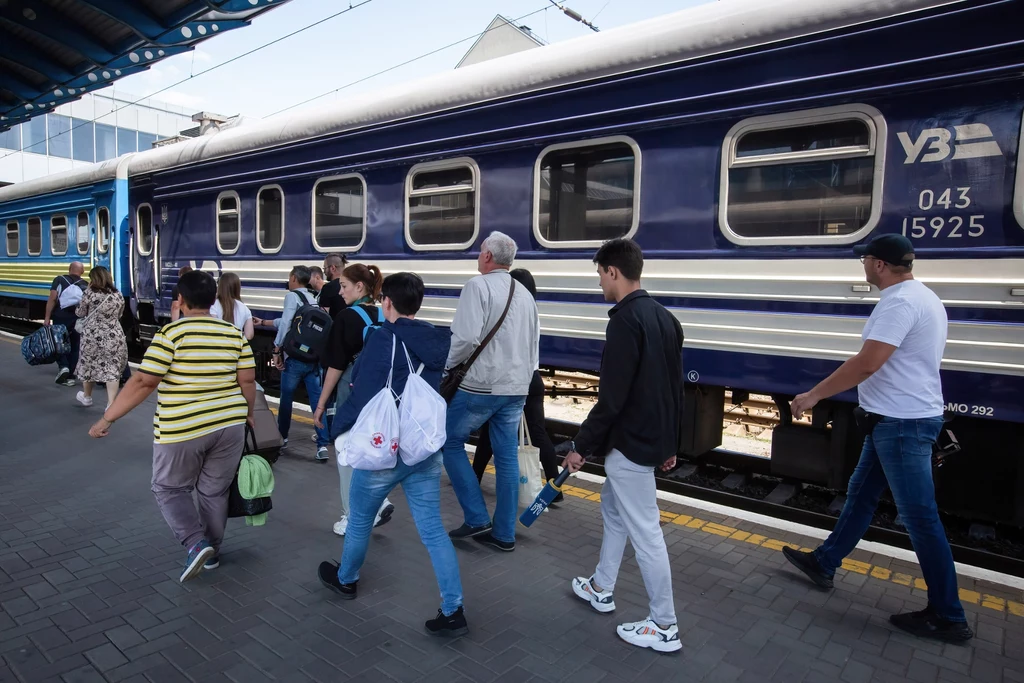
Polish Office Flooded with Migrant Applications Amid Record Numbers of Asylum Requests
Poland is facing an unprecedented surge in asylum applications, with migration pressures reaching record highs. This article sheds light on the significant increase in applications, bringing to focus the challenges Poland is experiencing as it navigates a growing migrant crisis.
Record Increase in Asylum Requests
In 2023 alone, Poland has processed 10,700 asylum applications, marking a significant rise from previous years. This increase is largely attributed to the ongoing geopolitical instability in neighboring countries. The majority of these applications are from individuals fleeing Ukraine, Belarus, and Russia. The war in Ukraine, political repression in Belarus, and unrest in Russia have driven thousands to seek refuge in Poland. In comparison, 2021 saw 7,700 asylum applications, which reflects how dramatically the situation has evolved in just a couple of years.
Impact of Germany’s Reinforced Border Controls
One of the most pressing factors exacerbating the situation is Germany’s recent decision to strengthen border controls. Germany, a primary destination for many migrants traveling through Poland, has implemented these measures to better manage the influx of migrants, especially those entering from countries like Belarus. By tightening its borders, Germany aims to prevent illegal crossings and process asylum applications at its own borders.
However, these actions have placed increased pressure on Poland. Migrants entering Germany through Poland are now being sent back under international rules, which stipulate that asylum applications should be processed in the first country the migrants entered. Consequently, Poland is seeing an overflow of asylum requests, straining its already burdened immigration system.
Challenges at Poland’s Borders
Despite concerted efforts by Polish authorities to secure its borders, especially the one shared with Belarus, illegal crossings and smuggling continue to be significant challenges. A buffer zone and reinforced patrols along the Polish-Belarusian border have been established, yet reports indicate that smugglers are still facilitating the movement of migrants into Poland. Many of these migrants, particularly from African and Asian nations, do not seek asylum in Poland but aim to move further into Western Europe.
This situation has created a complex dynamic for Polish authorities, who must manage the administrative burden of processing asylum applications while also controlling illegal migration. Many migrants who file for asylum in Poland eventually abandon the process, preferring to move on to countries like Germany, France, or the Scandinavian nations.
Political Reactions
Germany’s border controls have stirred political tensions, with Polish Prime Minister Donald Tusk strongly criticizing the move. He labeled the measures as politically motivated, arguing that they are more reflective of Germany’s internal politics than an effective solution to Europe’s migration challenges. Tusk emphasized that Germany’s actions unfairly burden neighboring countries like Poland, which is already grappling with migration issues.
Tusk’s stance reflects a broader concern in the Polish government that Germany’s new policies may destabilize Poland’s immigration system, forcing it to bear a disproportionate share of the migration load. Poland has called for urgent consultations with other affected countries to address the border control measures.
The Growing Migration Crisis in Poland
The current situation highlights the increasing pressures on Poland’s immigration system. As one of the major transit points for migrants entering Europe, Poland faces not only a humanitarian challenge but also a political and logistical one. The growing number of asylum requests, coupled with the strain from Germany’s border policies, puts Poland in a difficult position as it navigates both domestic and international pressures.
Poland’s immigration office is struggling to manage this influx, and with no immediate solution in sight, the crisis may continue to escalate. As migration patterns shift and border controls tighten across Europe, Poland will need to find a balance between securing its borders and addressing the humanitarian needs of thousands of migrants seeking refuge within its borders.

Leave a Reply